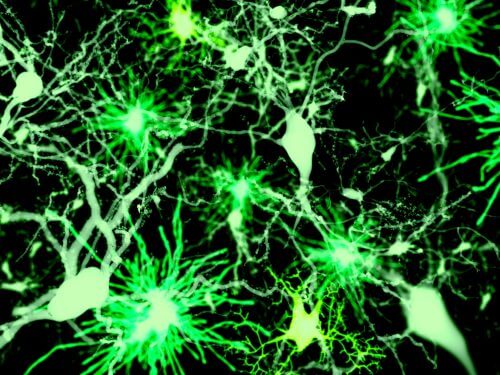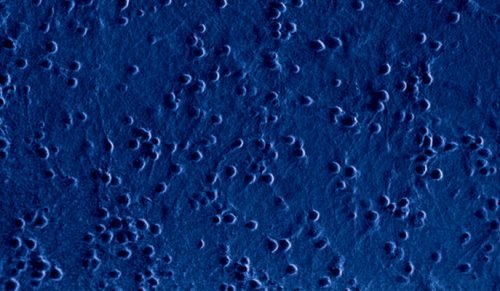Each cubic millimeter of the brain contains more than 100,000 neurons, each of which is capable of communicating with 10,000-1,000 other cells. New research shows how this communication works when not every cell is for itself

It is possible that the neural networks in our brains work democratically; That is, the behavior of the network as a whole is shaped by the collective behavior of its "citizens". in a unique experiment, in which a small "company" of neurons was grown in a laboratory dish, Weizmann Institute of Science scientists discovered that each neuron, when alone, operates at its own pace. However, when the conditions require the neurons to work together, their rhythms come together and become a coordinated signal.
"One of the unsolved questions regarding brain networks is how their activity is controlled," he says Prof. Menachem Segal from the department of neurobiology at the institute. "Many assumed the existence of 'leader cells' which motivate the others, but such cells have not been observed in action." Prof. Segal and the post-doctoral researcher Dr. Yaron Pan, together with the physicist Prof. Elisha Mozes, from the Department of Physics of Complex Systems, investigated this question in an artificial neural network developed by members of Prof. Moses' research group.
The experimental neural network they created is a simplified and working model of a brain network. It contains a small number of neurons from rat embryos, which have been grown together under laboratory conditions that allow the neurons to communicate with each other. In this way, the scientists can observe the activity of the neurons from a short range, as individuals and as a group, for long periods of time.
As part of the experiment, the researchers varied the levels of the various ions in the neurons' environment. These ions prevented or increased connectivity in the network. "The first surprise," says Dr. Penn, "was that most of the neurons were active and sent electrical signals even when they were disconnected from the network. This activity took the form of oscillations - periodic peaks and troughs - and each neuron oscillated at its own rate."

The second surprise was that when the conditions were suitable for the activity of the network, the signals that arose were also oscillatory, and the frequencies of these oscillations were close to the average of the individual neurons. This indicated a pattern of activity in which the individual neurons become increasingly connected, matching their frequencies to those of their neighbors, until the pattern is organized in a coordinated fashion. "The pattern we see in the experiments," says Prof. Moses, "corresponds to theoretical models in which the neurons are in a state where the signal arises democratically, as a result of the connectivity between them."
Prof. Moses says that many systems in nature, in addition to nervous systems, involve oscillations and coordination. "A cloud of fireflies flashing in unison, or an audience at a concert clapping in unison, are examples of a collective, coordinated and fluctuating system. We think that oscillation is the default state for many neurons; This insight can help us understand how their networks are formed."
How do neurons regulate their network activity? A key factor in answering this question is calcium ions. The scientists discovered that removing calcium from the cell's environment increases the cell's sensitivity, while adding calcium decreases its sensitivity, but increases the connectivity between the cells. "We managed to control these two factors - sensitivity and connectivity - and that's how we got results 'to order'," says Prof. Moses.

Thus, by manipulating the experimental neural network, the scientists found two different mechanisms responsible for the characteristics of the activity in the network. One of them was the collective average, which is characterized by a slow common oscillation, which lasts for several seconds and takes place even in low connectivity conditions. The scientists describe the second as a "scream": a sharp peak in which the electrical activity of all the neurons is highly synchronized (within about a hundredth of a second). A scream or a slow wave - both are products of link mechanisms between the neurons, which matured into a network and matched the frequencies of their oscillations to each other. Thus, instead of a hierarchical network in which each neuron acts according to a command, the network activity of the actual brain may be conducted like Madison's pure democracy: a collective and leaderless effort in which each neuron plays a role, and is affected by the group activity.
"The experimental system we developed and the result Dr. Penn received are the product of a unique collaboration between a neuroscientist and a physicist," says Prof. Segal, "and the insights we have brought up can lead us in many new directions. For example, we can ask how embryonic neurons begin to form networks, or what conditions in the brain induce specific network activity. On the other hand, we know that diseases like epilepsy involve an imbalance between sensitivity and connectivity, and this system can yield new ways to investigate what went wrong."

One response
This phenomenon is known in grid electricity and is called droop control. If you want all the sources to have constructive interference at the same frequency and the same wave front, you perform a control feedback that will bring them to the same state. If not, there is no energy scheme of the sources and there are other unwanted effects.